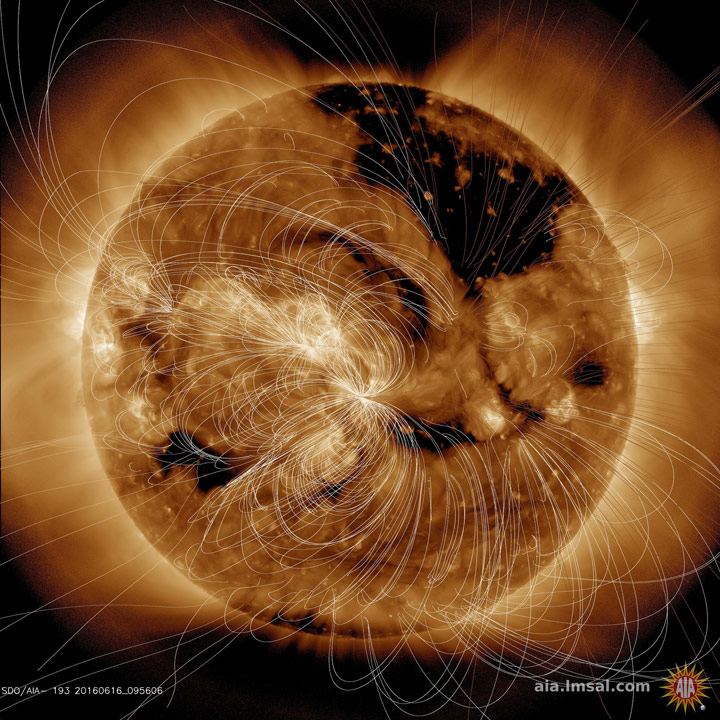Why is solar meteorology much more difficult and complex than terrestrial meteorology, made from maps and numerical forecasting models ? As the atmosphere of the Sun is a plasma, a charged matter, in theory we should be able to use the models of magneto-hydrodynamics associated with the maps of magnetic field and velocity field on the surface of the star. But it seems that it does not work very well. Perhaps it is due to the fact that the magnetic field which is measured is not the field that we believe to measure.
The article published this February 6, 2020 in the Astronomy & Astrophysics journal by Véronique Bommier, of the Observatoire de Paris, highlights a non-conservation of the magnetic flux, which suggests that indeed the field is not equal to what we think. To solve the problem, it is necessary to suppose the presence of a magnetization much more important than expected by the current models of the solar surface plasma. Only a much stronger magnetic field would be compatible with Maxwell’s equations. The accumulation of free electrons coming from inside the star, where the high temperature, coupled with the low mass of electrons, makes them escape gravity and protons, could explain this magnetization. A result which makes it possible to consider a modernization of the forecast in solar matter ejection !

The author of the article, Véronique Bommier, Directeur de Recherche CNRS, member of LESIA laboratory (Observatoire de Paris), has carried out numerous observations with the french solar telescope THEMIS built by the CNRS on the european site of Izaña (Tenerife island, Canaries, Spain). The interpretation of all these observations has revelaed the phenomenon.
Reference
- Solar photosphere magnetization, V. Bommier Astronomy & Astrophysics, 6 February 2020
